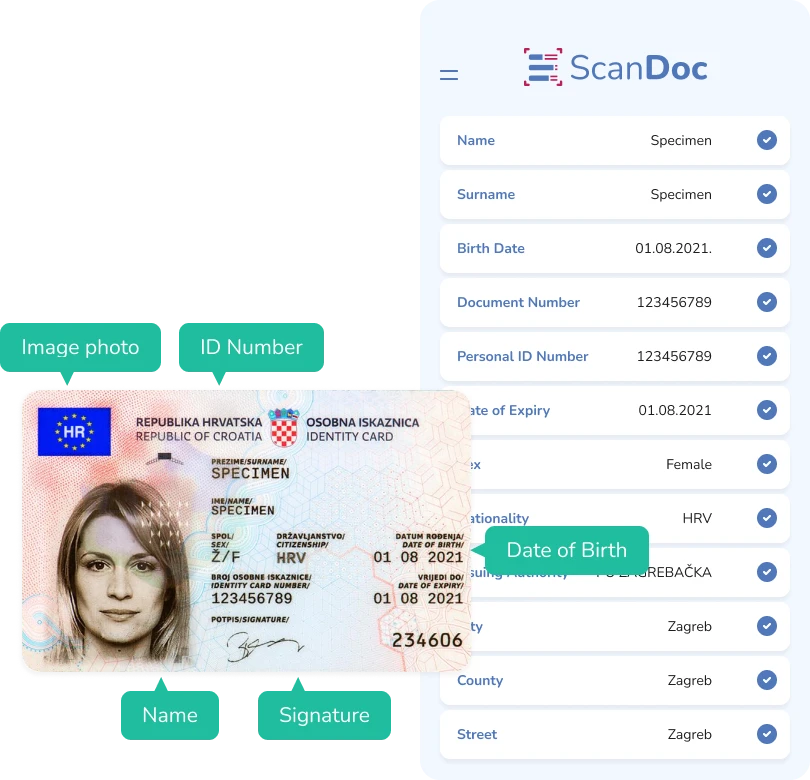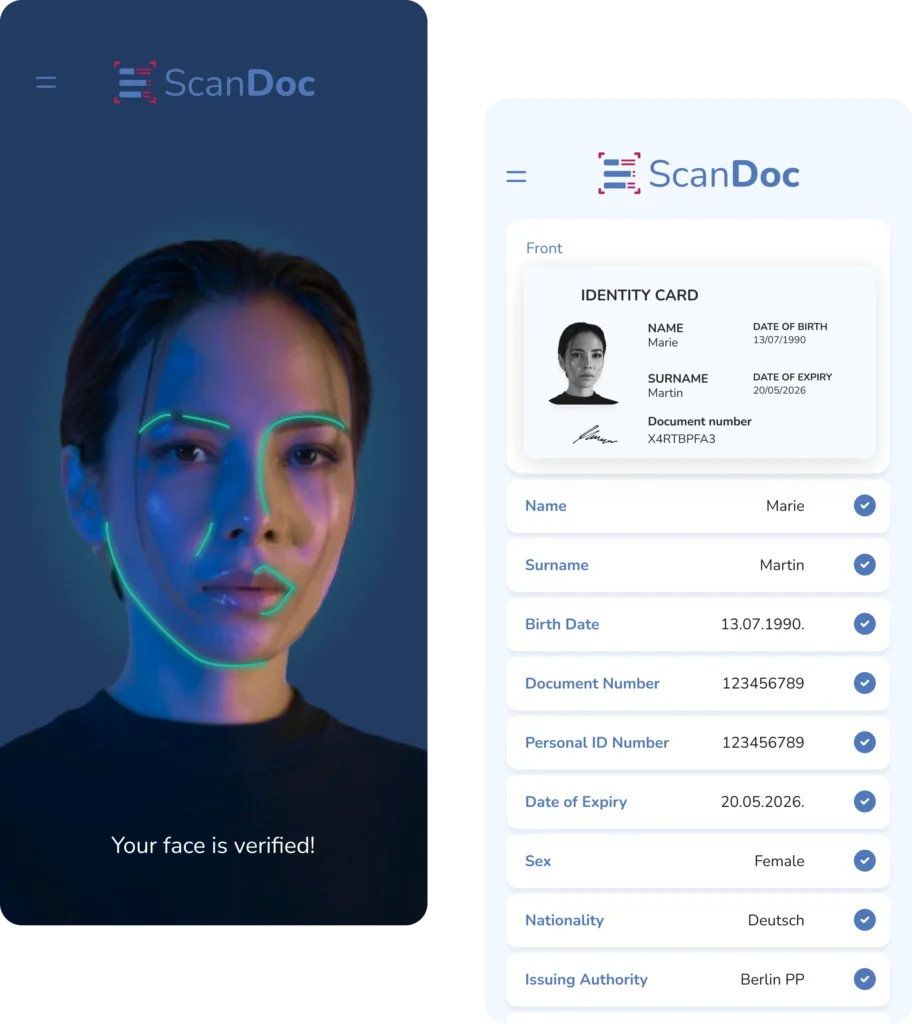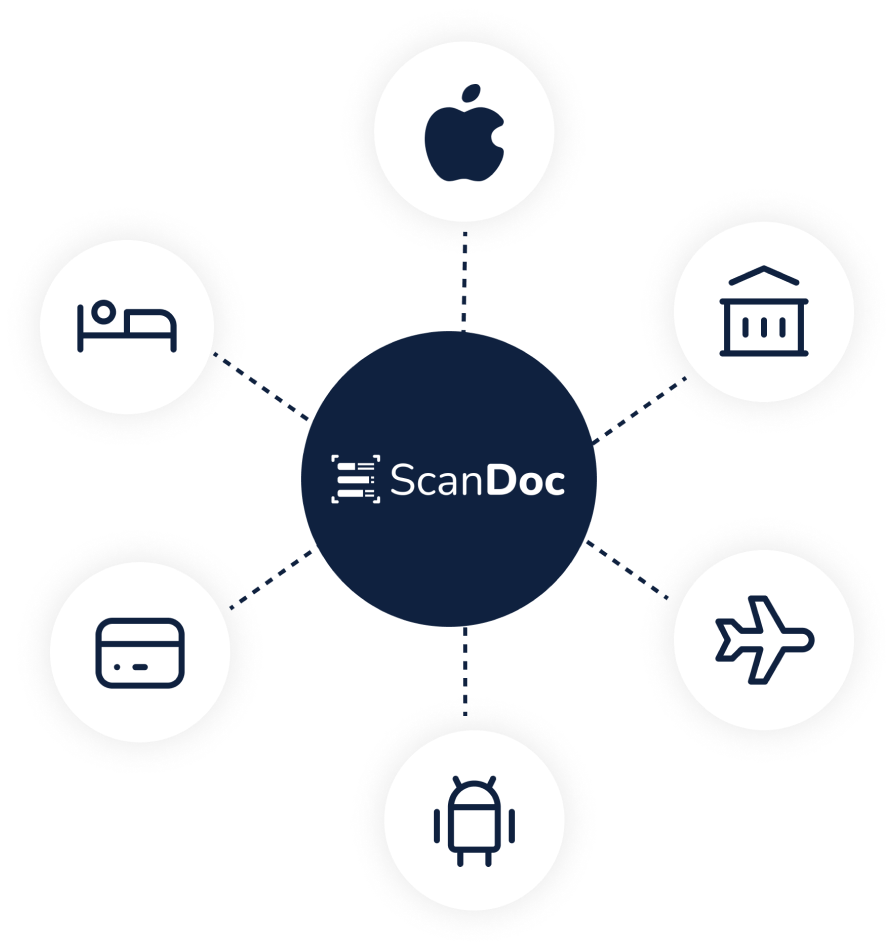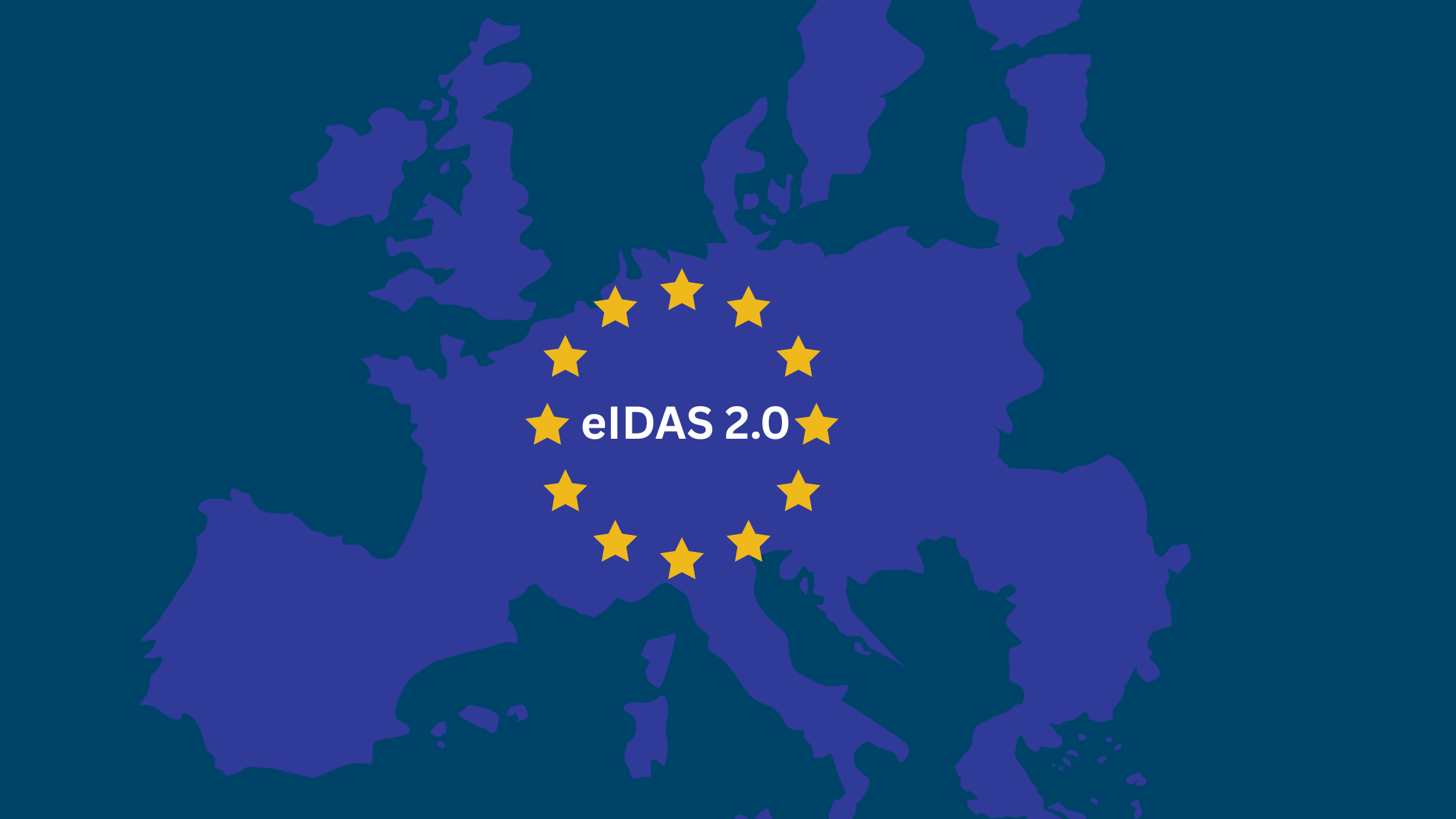AI-Powered ID Scanning is Transforming Online Check-In

The way we check-in for flights has changed significantly over the years. What used to involve long waits in airport lines has now shifted to the convenience of online check-ins.
This transformation has been fueled by new technology and the growing demand for more efficient travel experiences in the aviation industry.
In the early days of commercial aviation, passengers must arrive at the airport hours before their flight to stand in long lines, present their documents, and receive a paper boarding pass. This time-consuming process often led to frustration and delays.
As technology progressed, airlines introduced self-service kiosks, allowing travelers to check in and print their boarding passes at the airport. This reduced wait times and simplified the process.
The advent of the internet and smartphones ushered in a new era of online check-ins. Passengers could now complete the process from the comfort of their homes or while on the go.
However, despite these advancements, the need for document scanning solution at the airport remained a bottleneck.
This is where AI-powered ID scanning technology like ScnaDoc comes into play, revolutionizing the check-in experience and paving the way for a more seamless journey.

Understanding AI-Powered ID and Passport Scanning Technology
AI-powered ID and passport scanning technology is a sophisticated system that utilizes artificial intelligence and machine learning algorithms to verify and authenticate travel documents.
This cutting-edge solution can quickly and accurately read, analyze, and validate various forms of identification, including passports, driver’s licenses, and national ID cards.
The technology works by capturing high-resolution images of the document using a smartphone camera or specialized scanning device.
These images are then processed through an advanced optical character recognition (OCR) check, which extracts relevant information such as name, date of birth, and document number.
The AI algorithms then compare OCR and MRZ comparison and perform a series of checks to ensure the document’s authenticity.
Some key features of AI-powered ID scanning include:
- Document tampering detection: Identifying alterations or forgeries
- UV and infrared scanning: Verifying hidden security features
- Machine-readable zone (MRZ) parsing: Extracting coded information
- Real-time verification: Checking against watch lists and databases
How AI ID Scanning is Revolutionizing Online Check-In
Integrating AI ID scanning technology into online check-in processes is transforming how passengers prepare for their flights. This innovative solution addresses one of the most significant pain points in air travel: document verification.
With AI ID scanning, you can complete the check-in process, including document verification, from your smartphone or computer.
Here’s how it works:
- Access the airline’s mobile app or website
- Enter your booking details
- When prompted, use your device’s camera to scan your passport or ID
- ScanDoc extracts and verifies your document data in seconds
- Complete any remaining steps, such as seat selection or baggage declaration
- Receive your digital boarding pass
This simplified process eliminates the need for manual document checks at the airport, significantly reducing queue times and improving the overall travel experience.
Moreover, it allows airlines to detect potential issues with travel documents well in advance, minimizing last-minute complications and delays.

Benefits of AI ID and Passport Scanning for Airlines and Passengers
Adopting AI document scanning technology in aviation brings numerous advantages for airlines and passengers.
Let’s explore these benefits:
For Airlines:
- Improved Efficiency: Automating document verification reduces staff workload and speeds up the check-in process.
- Cost Savings: Fewer personnel are required for manual checks, reducing operational costs.
- Data Accuracy: Automated data extraction minimizes errors associated with manual data entry.
- Customer Satisfaction: Faster, more convenient check-in processes lead to happier passengers and increased loyalty.
For Passengers:
- Time-Saving: Complete check-in and document verification from anywhere, avoiding airport queues.
- Convenience: Use your smartphone or computer to handle all pre-flight processes.
- Peace of Mind: Receive instant confirmation that your documents are valid and accepted.
- Reduced Stress: Minimize the risk of last-minute document issues at the airport.
- Contactless Experience: Limit physical interactions, particularly valuable in a post-pandemic world.
Challenges and Concerns Surrounding AI ID Scanning in Aviation
While AI ID scanning offers numerous benefits, it also presents specific challenges and concerns that need to be addressed:
Data Privacy and Security
Data privacy is a paramount concern for any technology handling sensitive personal information.
Airlines and technology providers such as ScanDoc must implement robust security measures to protect passengers’ data from breaches and unauthorized access.
These measures include end-to-end encryption, secure data storage, and compliance with international data protection regulations such as GDPR.
Accuracy and Reliability
Although AI systems are highly accurate, errors or false positives are always possible.
Factors such as poor lighting, low-quality cameras, or damaged documents can affect the scanning process. Airlines need backup solutions and human oversight to handle cases where AI verification fails.
Accessibility Issues
Not all passengers have access to smartphones or are comfortable using advanced technology. Airlines must ensure that alternative check-in methods remain available to accommodate all travelers, including those with disabilities or limited tech literacy.
Case Studies: Airlines Successfully Implementing AI ID Scanning
Several airlines have already embraced ScanDoc and are reaping significant benefits.
Let’s look at a few success stories:
British Airways
British Airways implemented AI-powered ID and passport scanning in their mobile app, allowing passengers to verify their documents before arriving at the airport.
This initiative reduced check-in times by up to 50% and significantly improved customer satisfaction scores.
Delta Air Lines
Delta introduced AI document verification for international travelers, enabling them to upload passport information via their mobile app. This system has simplified the check-in process and reduced the time spent at airport kiosks by up to 30%.
Emirates
Emirates adopted a comprehensive AI ID scanning solution for its online and mobile check-in processes. Since implementation, the airline reported a 20% reduction in airport queues and a 15% increase in on-time departures.
These case studies demonstrate the tangible benefits of AI ID scanning technology in improving operational efficiency and passenger experience.
The Impact of AI ID Scanning on Airport Operations
The widespread adoption of AI ID scanning technology is having a profound impact on airport operations:
Reduced Congestion
With more passengers completing document verification before arriving at the airport, queue times at check-in counters and security checkpoints have significantly reduced. This leads to smoother passenger flow and less congestion in terminal areas.
Resource Optimization
AI ID scanning allows airports to allocate their resources more efficiently.
With fewer staff needed for manual document checks, personnel can be reassigned to other areas that require a human touch, such as customer service or special assistance.
Improved Security
By automating document verification, airports can dedicate more time and resources to other crucial security measures. AI systems can also flag suspicious documents for further investigation, improving airport security.
Improved Passenger Experience
Shorter queues, faster processing times, and a more simplified journey through the airport contribute to a significantly improved passenger experience. This can increase satisfaction and boost retail spending in airport shops and restaurants.
Future Trends in AI-Powered Aviation Technologies
As AI continues to evolve, we can expect to see even more innovative applications in the aviation industry:
- Predictive Analytics: AI systems forecast passenger flow, allowing airports to adjust staffing and resources in real-time.
- Virtual Assistants: AI-powered chatbots and virtual agents to provide personalized travel information and assistance.
- Automated Baggage Handling: AI and robotics working together to simplify the baggage check-in and delivery process.
- Intelligent Aircraft Maintenance: AI systems that predict maintenance needs and optimize aircraft performance.
These advancements promise to make air travel even more efficient, secure, and enjoyable in the future.
Integrating AI ID Scanning with Other Travel Technologies
The true power of AI ID scanning lies in its ability to integrate seamlessly with other travel technologies, creating a holistic and frictionless journey.
Here are some exciting integrations on the horizon:
Digital Travel Credentials
Digital travel credentials (DTCs) are being developed, which could replace physical passports. AI ID scanning will be crucial in verifying and authenticating these digital documents.
IoT and Location Services
Integration with Internet of Things (IoT) devices and location services could enable personalized, real-time guidance for passengers throughout their journey based on their verified identity and flight information.
Health and Vaccination Verification
In a post-pandemic world, AI ID scanning could be extended to verify health certificates and vaccination records, ensuring compliance with international travel requirements.

Preparing for the Future: What Passengers Need to Know
As AI ID scanning becomes more prevalent in air travel, here’s what you need to know to prepare for your future flights:
- Keep Your Documents Updated: Ensure your passport or ID is valid and in good condition for optimal scanning results.
- Familiarize Yourself with Airline Apps: Download and explore your airline’s mobile app to understand the AI ID scanning process.
- Check Device Compatibility: Ensure your smartphone or tablet meets the minimum requirements for document scanning.
- Be Prepared for Alternatives: While AI scanning is convenient, always be ready with physical documents as a backup.
- Stay Informed About Privacy Policies: Read and understand how airlines and airports handle your personal data.
- Embrace the Technology: Don’t be afraid to try new features – they’re designed to make your travel experience smoother and more enjoyable.
By staying informed and embracing these technological advancements, you’ll be well-prepared to navigate the future of air travel easily and confidently.
Experience the future of document verification today with ScanDoc, our cutting-edge AI-powered scanning solution.Whether an airline looking to simplify your check-in process or a frequent traveler seeking a more convenient journey, ScanDoc offers fast, accurate, and secure document scanning.
Try ScanDoc now and revolutionize your travel experience!
In conclusion, AI-powered ID scanning transforms the air travel landscape, offering unprecedented convenience, efficiency, and security.
As this technology continues to evolve and integrate with other innovative solutions, we can look forward to a future where air travel is smoother, faster, and more enjoyable.
Embrace the change and prepare for a new era of seamless, technology-driven journeys through the skies.





